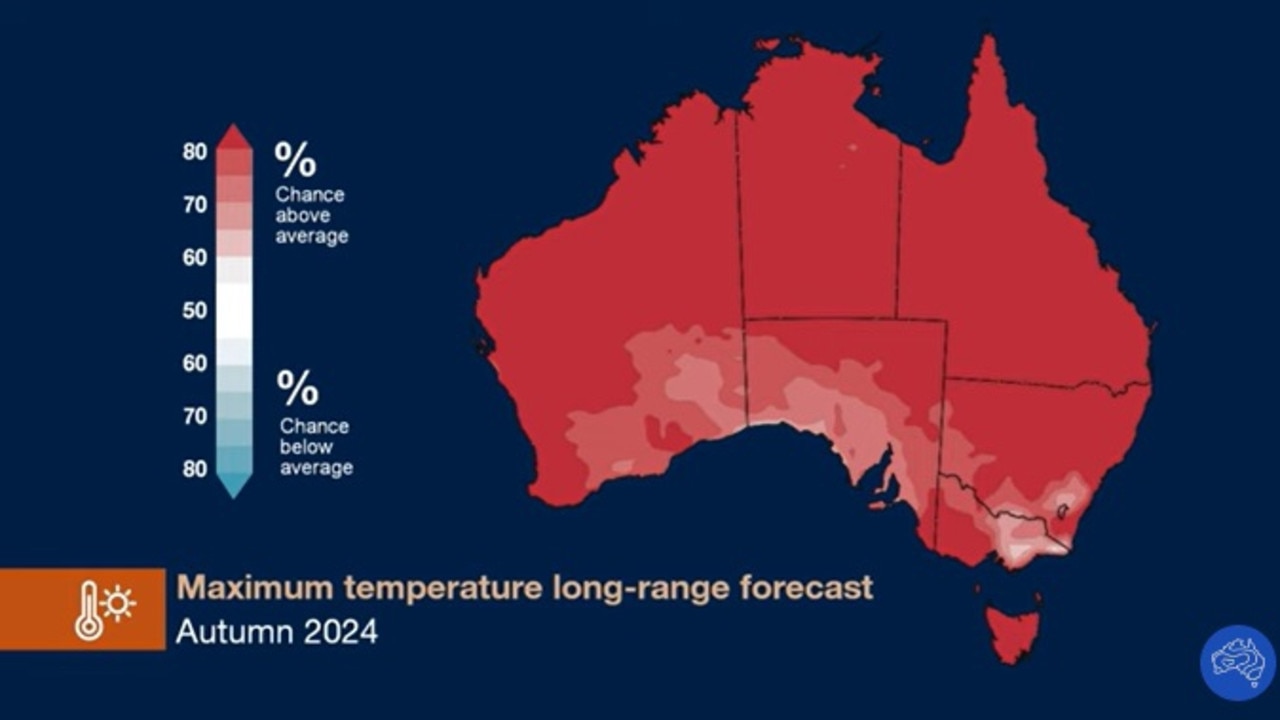Scorching summer temperatures are expected to linger this autumn with the Bureau of Meteorology’s long range forecast anticipating warm days and nights this season.
The majority of Australia has up to an 80 per cent chance of above average temperatures this Autumn following what was Australia’s third-warmest summer on record, according to the Bureau.
As temperatures are set to soar, a dry autumn is ahead with large parts of the country expected to receive below the median rainfall.
The majority of New South Wales, Victoria, Queensland, parts of South Australia including
Adelaide, the southeast, east and northeastern border districts of Northern and eastern Tasmania, the south-west corner of Western Australia and most of the Northern Territory have a 60 to 70 per cent chance of below median rainfall.
However some regions have an almost equal chance of experiencing above or below median rainfall.
These include parts of eastern New South Wales including Sydney, the Hunter, and South Coast; East Gippsland in Victoria; most areas in South Australia; South-eastern Queensland, the North Tropical Coast and Tablelands; most of southern and Western Australia and parts of the Northern Territory’s Daly region and south-west corner.
Bureau of Meteorology senior climatologist Lynette Bettio said the median rainfall in the tropics will remain high into autumn as the wet season continues.
“Tropical cyclones, tropical lows, storms and active monsoon bursts may still occur in the north, so stay prepared for severe weather,” Ms Bettio said.
The Bureau anticipates the country will have typical fire potential this season.
The forecast comes as Australia’s summer was marked by persistent and widespread heat, with temperatures reaching 1.62C above the 1961-1990 average.
The summer season was among the ten warmest summers on record for all states and territories except Victoria.
The season also marked Western Australia’s warmest summer on record since observations first began in 1910.
The national mean maximum temperature was 1.73C above average and the national mean minimum temperature was 1.5C above average.
“Mean maximum temperatures were above average for Tasmania, most of Western Australia, South Australia and New South Wales, the Northern Territory and Queensland and parts of northwestern and far eastern Victoria,” the Bureau said.
“Summer mean minimum temperatures were above average for nearly all of Australia and highest on record for southeastern Queensland, northeastern New South Wales, Cape York Peninsula and parts of inland Western Australia and the Top End of the Northern Territory.”
